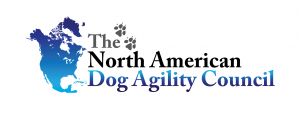
NADAC recently sent out a survey in regards to certain expenses that agility handlers have, on average.
This survey was meant to be used to get a baseline of the possible economic impact that agility has on the US economy.
Full disclosure in that we did this because NADAC is being hit extremely hard by the COVID-19 outbreak, and we want as much info as possible going forward in the event that NADAC needs to secure government funding in order to continue operations. So we have our motives for this study, but we will gladly share the responses we received with any venue who is interested in them.
A few things before we get into the results, as many people have brought it up and we want to address it here.
- We will most likely run this survey again, with better wording of the questions. We felt it was self explanatory, but that was not the case for a lot of people submitting.
- It was 100% intentionally to NOT include the cost of training, dog food, equipment for practice at home and other items that would also have an economic impact. We did this because we really wanted to focus for now on the impact that would be felt by businesses that most people would understand better, so hotels, gas stations and restaurants are places that anyone can grasp the idea of, and also know the relative value. It would be similar to me saying that I spent $20 on a specialty brand of soap that is only made here in Oregon. You don’t know whether $20 is a lot, or a little, because you don’t understand the product or knows its worth. This would be the same as explaining dog training to someone who has no concept of what it’s worth is. If you spend $200 a month on classes for your dog, some people might think that’s incredibly cheap, and others might think it’s incredibly expensive, because they have no knowledge. Where as if I say that I spent $400 on gas last month, just about everyone has a solid grasp on whether that is a large or small amount. We WILL be having another survey that will cover these things, but for now we wanted to try and stick to things that are easy to explain.
- We did not include RV expenses because that is a somewhat small subset of the people competing. Again, this is something we CAN include on a later survey. But for now we wanted to keep it simpler.
Now for the actual data!
At the time of us writing this we got 1110 usable submissions.
The average of those submissions for each question asked was:
Money spent on Entries per weekend: $185
Money spent on Lodging per weekend: $105.89
Money spent on Meals per weekend: $55
Money spent on Travel per weekend, we used the current IRS rate of $0.575 cents per mile: $79.35
Average number of Trials attended each year: 12
So with this data we were able to come up with a VERY conservative idea of what Agility brings into the US economy.
Keeping in mind, you’ll notice a lot of those numbers seem low. And that is why we’ll end up doing the survey again, with a better wording of questions and a couple more questions added, so that those numbers can be more accurate.
But, I would MUCH prefer to be conservative, and then come up with an even higher number later on, then to to use a larger number now, and then have it decrease later on.
So using those numbers, based off the number of competitors that we had competing in NADAC in 2019 we estimate that NADAC alone brings in $20,411,553.60 to the US economy.
And that is a VERY low estimate. Realistically I feel once we redo the survey, add in the costs of training and other misc items related to the sport, and the RV competitors, I truly feel that the true number will be much closer to $50 Million dollars per year.
So we believe that keeping NADAC alive and going is not only something that should be taken serious within our clubs and competitors, but also something that is of value to the entire US economy as well.
